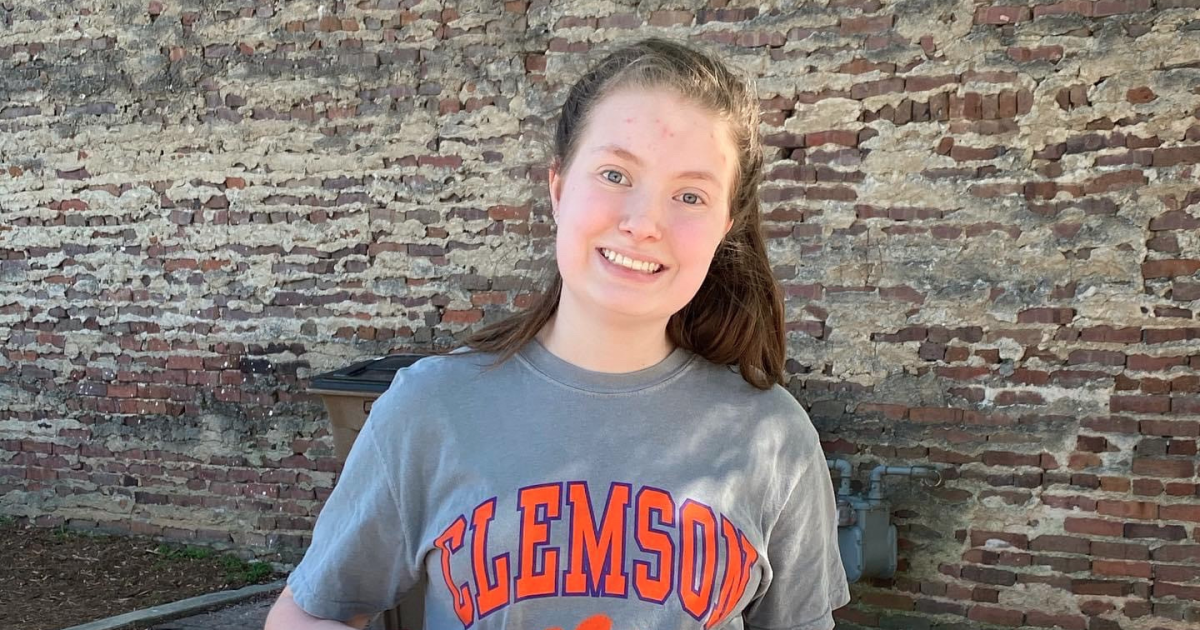Two Battles with AML Couldn't Stop Lilli Hicks
- Lilli Hicks is about to graduate from a high school in North Carolina, and she will continue her education at Clemson University in the fall.
- Hicks has survived two battles with acute myeloid leukemia and a stem-call transplant.
- Acute myeloid leukemia (AML), is a blood cancer that affects the spongy tissue inside of your bones called bone marrow. Stem-cell transplants allow doctors to give people with AML high doses of chemotherapy, but their immune systems are severely compromised as a result.
Since middle school, Hicks has survived two fights with acute myeloid leukemia and an intense stem-cell transplant. Despite these challenges, the 18-year-old has done well enough at Grimsley High School in Greensboro, North Carolina, to get accepted into Clemson University. It’s been six years since her first cancer diagnosis, but Hicks is not going to forget her experience. She is making the most of this transitional time in her life while acknowledging the tough road she walked to get there.
Read More“The treatments, they make you feel like crap sometimes,” she told WFMY. “I don’t want kids in the future to have to feel like that to save their life.”
She’s even received a scholarship from Avomeen, a research, contract development and manufacturing organization that brings chemists and scientists together to address chemical issues, to help her reach her goals. She told Avomeen that she plans to take advantage of research opportunities in college and, eventually, graduate school too.
“I feel that I would not want to research cancer treatments if it were not for my diagnosis of childhood leukemia,” Hicks told Avomeen. “Over the past several years I decided to have a positive impact on the lives of children with cancer through my future career.”
Understanding Acute Myeloid Leukemia
Hicks’ type of leukemia, acute myeloid leukemia (AML), is a blood cancer that affects the spongy tissue inside of your bones called bone marrow. It's a rare cancer, but it is the most common type of leukemia in adults, and, rarely, teens like Hicks also get AML.
Dr. Mikkael Sekeres breaks down acute myeloid leukemia
Dr. Mikkael Sekeres, chief of the Division of Hematology at the University of Miami Sylvester Comprehensive Cancer Center, explains that bone marrow is essentially the factory that makes all of the cells in the blood stream. This includes the red blood cells that bring oxygen to our tissues, white blood cells that make up the immune system and the platelets which help stop bleeding.
When a person has AML, "that factory gets broken" because the bone marrow fills with cancer cells. Ultimately, this hinders the creation and function of the important blood cells.
"So there's a bit of a paradox," Dr. Sekeres tells SurvivorNet. "The bone marrow has too many cells, yet the bloodstream has too few cells as the normal bone marrow cells die off."
Symptoms of AML can include shortness of breath, decreased exercise tolerance, unexplained bruising or infections. But sometimes people with AML have no symptoms at all.
Dr. Gail Roboz explains the symptoms of AML
"Most of the time, this comes as an unwelcome surprise diagnosis," Dr. Gail Roboz, a medical oncologist at Weill Cornell Medicine, tells SurvivorNet. "Often, patients have no idea that leukemia is even anywhere on the radar."
Lilli’s Treatment
We don’t know the details about Hicks’ treatment for acute myeloid leukemia, but she did share that she had a stem-cell transplant.
During a stem-cell transplant, healthy cellseither from your own body (known as an autologous stem-cell transplant) or from a donor (known as an allogeneic stem-cell transplant)are injected into the blood in order to help your body produce the healthy cells and platelets it needs. In some cases, the cells come from the blood. In others, they come from the bone marrow, in which case the procedure is referred to as a bone-marrow transplant, which is a type of stem-cell transplant.
If it's determined that a stem-cell transplant is right for you, the following steps are taken:
Collection: Stem cells are taken either from your bone marrow or blood or from a donor.
Conditioning: The process may vary among patients, but it typically involves chemotherapy and/or radiation to remove as many of the cancer cells as possible.
Infusion: Stem cells are infused into the bloodstream via an IV or catheter.
RELATED: What To Expect During Recovery After a Stem-Cell Transplant For AML
Side Effects of Stem-Cell Transplants For AML
Learn more about SurvivorNet's rigorous medical review process.


